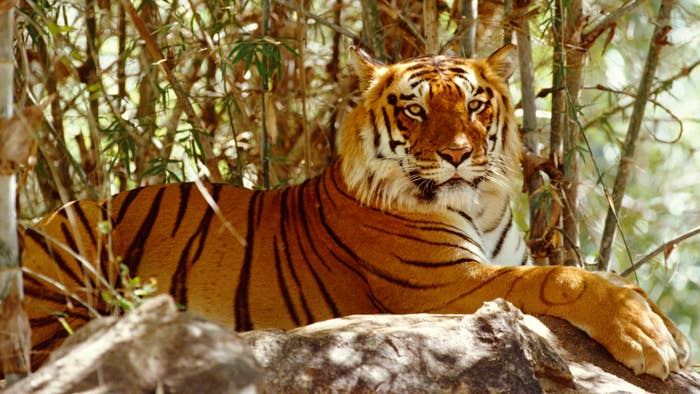
The first season of Tiger King ends with Joe Exotic finding himself incarcerated for murder-for-hire charges and his Greater Wynnewood Exotic Animal Park under new ownership.
But what happened to Exotic’s animals? Kent Drotar, the public relations director of the Wild Animal Sanctuary, has told People that 39 tigers and three black bears from Exotic’s zoo are now living in a Keenesburg, Colorado sanctuary.
The non-profit, The Wild Animal Sanctuary has two properties. The first is the sanctuary itself is a 40-year-old, 789-acre property that houses animals that have been rescued from negligent and illegal circumstances. The second is a 10,000-acre property for the Wild Animal Refuge, which has allowed the sanctuary to expand its number of rescues. Neither the sanctuary nor the refuge breed animals, and they don’t allow guests or keepers to come into contact with the animals. The Wild Animal Sanctuary now has around 550 animals.
“We are almost the complete antithesis to what those other places do,” Drotar told People, referencing private zoos like Exotic’s. “We rescue and give permanent homes to animals that come from situations like that.”
Drotar explained that around 80 percent of the sanctuary’s animals—lions, jaguars, tigers, wolves, bears, ostriches, et al. — come to the facility after being seized by law enforcement agencies, like the U.S. Department of Agriculture or U.S. Fish and Wildlife. An animal arrives at the sanctuary after all legal proceedings regarding its seizure have concluded.
The remaining 20 percent are animals that have been voluntarily handed over when owners realize how strict exotic pet ownership laws are—or they recognized they underestimated what it takes to care for an exotic pet.
The sanctuary acquired Exotic’s 39 tigers and three bears through both surrender and threat of legal action. In 2016, 19 tigers arrived at the sanctuary after Exotic was in hot water for taking the big cats across state lines—from Florida to Kentucky. Later, Exotic surrendered another 20 tigers and three bears.
The animals have no been at the sanctuary for a little over two years and are in better shape than when they arrived. Drotar said that the tigers were malnourished and weak, with dull coats and major dental problems. Many of the big cats were also badly declawed, which resulted in mobility issues—and had “broken spirits,” People writes.
“It’s kind of like the tigers were thinking, ‘Wow, my life is not worth living,'” he said. Exotic was keeping the tigers in 12 ft. x 12 ft. cages on the 16-acre zoo. At the sanctuary, each tiger habitat has four or five tigers and sits on 16 acres plots of land.
“The animals are just happier. They are no longer just pacing,” Drotar said of how the tigers have changed since arriving at the sanctuary. “It was almost an immediate change with their demeanor. They see other tigers. They see other animals. They see a horizon. They just have more of a purpose for living.”

